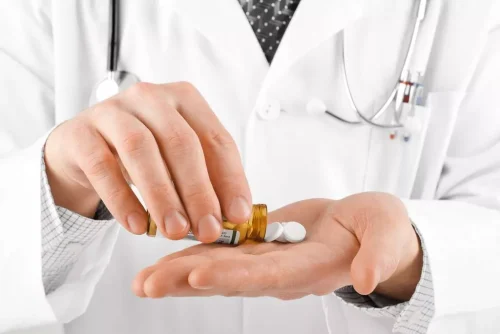ACG Clinical Guideline: Alcoholic Liver Disease PMC

To confirm that alcohol-related cirrhosis has developed, a doctor will try to rule out other conditions that may affect the liver. Coexisting iron accumulation or chronic hepatitis C increases risk of hepatocellular carcinoma. A nutritious diet and vitamin supplements (especially B vitamins) are important during the first few days of abstinence. Alcohol withdrawalportosystemic encephalopathy and thus must be avoided. Alcohol biomarkers, such as urine or hair ethyl glucuronide, urine ethyl sulfate, and phosphatidylethanol (PEth), can be used to support patient history and aid in recovery. Hepatocellular carcinoma may also develop in patients with cirrhosis, especially if iron accumulation coexists.
Medical Treatment

Your healthcare professional does a physical exam and asks about your alcohol use, now and in the past. Your care professional might ask to talk to family members about your drinking. The best treatment for ALD, regardless of the stage of the https://ecosoberhouse.com/ disease, is abstinence from alcohol. The liver also filters and removes toxic substances—like alcohol—from the blood. When a person drinks alcohol, the alcohol passes into stomach and intestines where it is absorbed into the bloodstream.
Liver Failure Stages
Current guidelines suggest discontinuation of therapy if there is no indication of a decrease in bilirubin levels by day 7 of treatment (European Association for the Study of the Liver 2012). Recently, it was reported that HSCs also play a dual (i.e., stage-dependent) role in the regulation of liver inflammation (Fujita et al. 2016). An important function of HSCs is to transmit signals from sinusoid cells to the liver parenchyma.
What Are the Warning Signs of Alcohol-Related Liver Damage?

If your liver is very bad and barely working, you may need a liver transplant. With a transplant, doctors do surgery to replace your bad liver with a healthy one. Because alcohol will damage your new liver too, doctors usually do a transplant only if you have stopped drinking.
- Inflammasomes are innate immune-system sensors that regulate the activation of caspase-1 and induce inflammation in response to microbial/ viral pathogens, molecules derived from host proteins, and toxic insults (e.g., alcohol exposure).
- Hepatic and extrahepatic mechanisms that contribute to the development of alcoholic fatty liver (i.e., steatosis).
- Furthermore, in our practice, acamprosate is reserved for use in patients with more severe AUD.
- We therefore aimed to conduct a RCT to evaluate the safety, acceptability and feasibility of MVC add-on therapy to cART in HIV-NAFLD in preparation for conducting a larger RCT in the future.
Potential future treatments

A network meta-analysis comparing various pharmacological agents showed moderate quality evidence that combination of prednisolone and N-acetylcysteine provides best survival benefit at 28 days with 85% risk reduction of death from AH (121). However, more data on the efficacy of N-acetylcysteine in severe AH patients are needed before recommending its routine use in practice. Typically, only people who can show at least 6 months of abstinence from alcohol before the procedure will be suitable candidates for a transplant.
Hepatic fat accumulation
Recommendations based on Population Intervention Comparison Outcome format/Grading of Recommendations Assessment, Development, and Evaluation analysis are in Table 1. These recommendations and guidelines should be tailored to individual patients and circumstances in routine clinical practice. Key concepts and recommendations based on author expert opinion and review of literature are in Table 2.
What can happen to your liver if you drink too much alcohol?
This review is the result of work supported with resources and the use of the facilities at the Omaha Veterans Affairs Medical Center. The original research cited in this review was supported by Merit Review grants BX (Dr. Kharbanda) and BX (Dr. Osna) from the alcoholic liver disease Department of Veterans Affairs, Office of Research and Development (Biomedical Laboratory Research and Development). There are no FDA-approved therapies for treating patients with ALD. The following therapies currently are used for optimal ALD management.
- They may also recommend imaging tests like an MR elastogram that checks for scarring in the liver or an MRI of the abdomen, CT scan or an ultrasound.
- Getting adequate proteins, calories, and nutrients can alleviate symptoms, improve quality of life, and decrease mortality.
- Involvement of addiction specialists and incorporation of an addiction unit within the LT center is useful in reducing frequency of drinking and recidivism compared to referring these patients to an outside center for addiction therapy (161).
- The disease burden of alcohol is rapidly increasing in Asian countries such as China, Korea, and India.
- Sign up for free, and receive liver transplant and decompensated cirrhosis content, plus expertise on liver health.
- In a meta-analysis, metabolic abnormalities were risk factors for HIV-NAFLD, including type 2 diabetes mellitus, hypertension, and elevated body mass index (BMI) [2].
The damaged hepatocytes are swollen with a granular cytoplasm (balloon degeneration) or contain fibrillar protein in the cytoplasm (Mallory or alcoholic hyaline bodies). Brief intervention, pharmacotherapy, and referral to treatment should be offered to patients engaged in hazardous drinking (ie, heavy or binge drinking) (3, 4). The AASLD recommends using the Alcohol Use Disorders Inventory Test (AUDIT) if excessive alcohol use is suspected (3).

